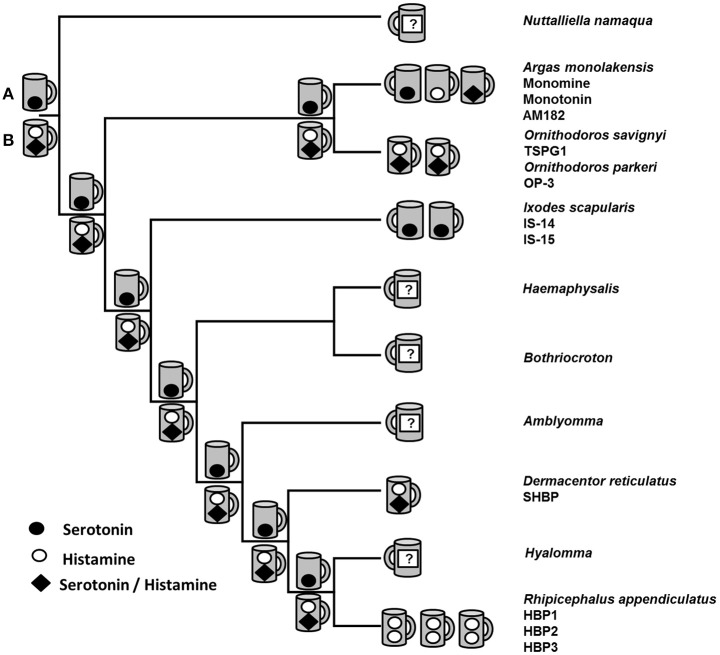Figure 3.
Evolutionary scenarios in the reconstruction of biogenic amine binding function. Indicated are the phylogenetic relationships of various tick genera as determined with mitochondrial analysis (Mans et al., 2012). Terminal nodes represent extant lipocalins for which empirical histamine or serotonin binding data exist. The number of lipocalins for which experimental data have been generated are indicated as cups (lipocalin~calyx~cup) that bind histamine in the upper binding site and serotonin and/or histamine in the lower binding pocket. Names of characterized lipocalins are indicated below their genus names. Internal nodes represent two possible ancestral binding site hypotheses: (A) The ancestral BABP had a single lower serotonin-binding site, or (B) the ancestral BABP had an upper histamine and lower histamine/serotonin-binding site.

